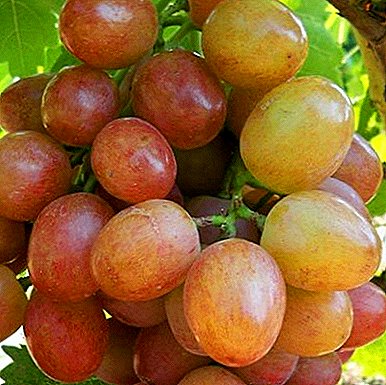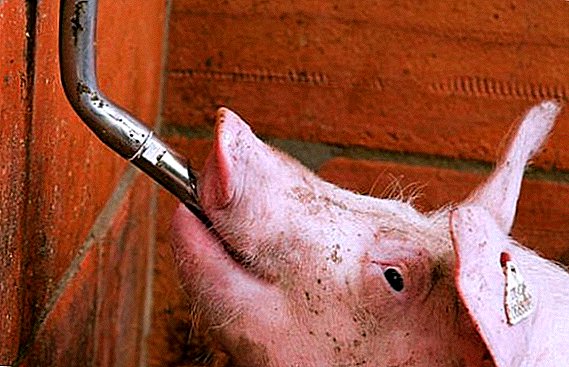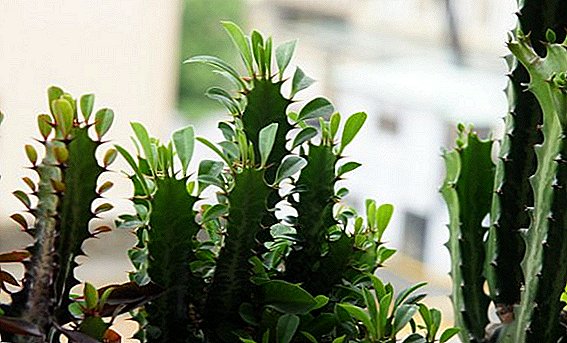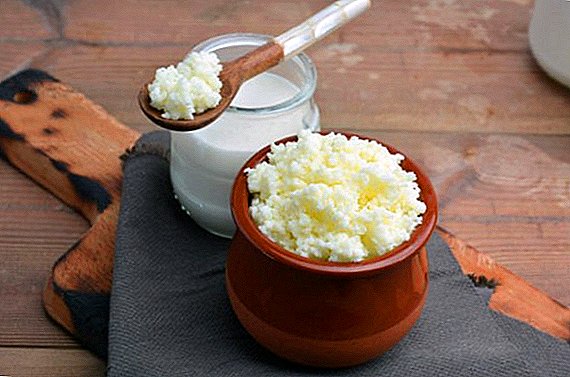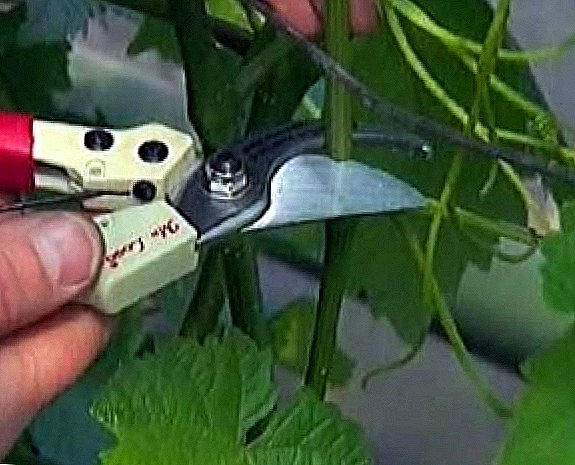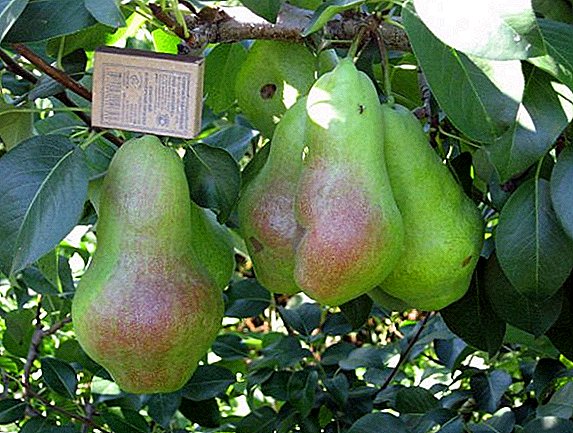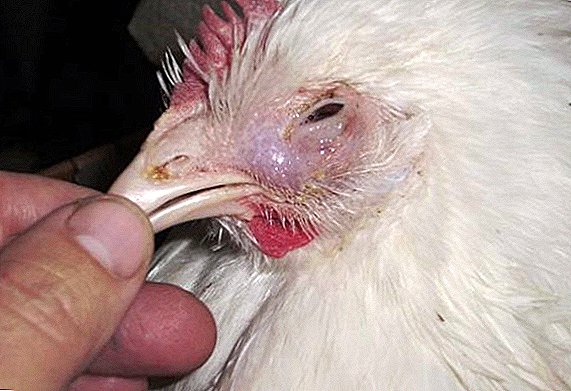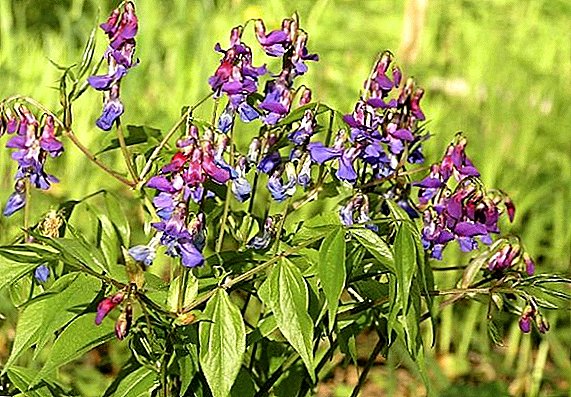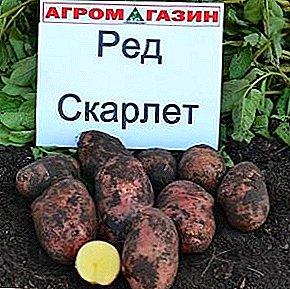
Red Scarlett is a variety of early ripe potatoes of Dutch origin. It has elongated, regular shaped tubers with a pink-raspberry peel that look great and are stored for a long time.
Because of the excellent presentation and the ability to tolerate transportation, potatoes of this variety are very popular among farmers and gardeners.
In our article you will find a detailed description of the variety, get acquainted with the peculiarities of cultivation and characteristics, find out what diseases are susceptible to potatoes.
Variety description
| Grade name | Red Scarlet |
| general characteristics | early ripe table variety of Dutch selection with good yields |
| Gestation period | 70-80 days |
| Starch content | 10-15% |
| Mass of commercial tubers | 90-150 gr |
| The number of tubers in the bush | up to 15 |
| Yield | up to 400 kg / ha |
| Consumer quality | normal taste, average stewiness |
| Recumbency | 98% |
| Skin color | pink |
| Pulp color | white |
| Preferred growing regions | Central, South |
| Disease resistance | prone to late blight foliage, scab, Alternaria |
| Features of growing | row spacing of 70-80 cm, after the appearance of the first shoots to form ridges with a height of 20-25 cm and a width of 75 cm |
| Originator | "HZPC HOLLAND B.V." (Netherlands) |
The peel is relatively thin, crimson-red, smooth or slightly rough. Eyes superficial and not too noticeable, 1-1.5 mm deep, dark or yellowish in color. Light sprouts are purple or reddish at the base.
The color of the pulp of raw tubers: from white to light yellow. When cutting does not darken in the air. During cooking, the color also does not change. The form is elongated, oval, in most cases quite correct.
According to various sources, the starch content is about 10-15% or 16-17%. The property of potato Red Scarlett is weakly boiled down with this.
The mass of one tuber is usually in the range of 50-80 to 100-120 grams. Larger tubers are found, including those weighing up to 150 g, but relatively rare. The shape of large tubers is often irregular. The number of tubers on the bush from 12-15 to 20. They are formed simultaneously, and the difference in size and weight is not too striking.
In the table below you will find information on the number of tubers and their weight in other potato varieties:
| Grade name | The number of tubers in the bush (pc) | Tuber weight (g) |
| Bryansk delicacy | 12-15 | 75-120 |
| Ariel | 10-15 | 80-170 |
| Artemis | 11-15 | 110-120 |
| Borovichok | 9-14 | 120-200 |
| Giant | 8-13 | 100-120 |
| Tuscany | 7-11 | 90-125 |
| Yanka | 6-11 | 80-100 |
| Purple Haze | 7-10 | 90-160 |
Potatoes are well kept. About what are the storage periods, as well as how to store roots in the winter, in boxes, in the refrigerator and peeled, read in the articles of our site.
Low erect shrub with stems of medium thickness. The plant is relatively quickly formed. The corolla of the flower may be darker, reddish-purple, or light pink-lilac. The leaves are dark green, medium size, the edges of the leaf blade slightly wavy.
A photo


Specifications
The most suitable climate for the Red Scarlett variety in the Central and Southern regions of Russia, here its cultivation gives the best results. It is successfully grown in other localities of Russia, and in the countries of the former USSR.
Potatoes of this variety are best suited moist, not hot climate. In areas where high soil temperatures or droughts are possible, form large potato ridges and water them regularly. During planting make additional amounts of calcium. Do not interfere with the use of soil mulch.
Productivity depends on the region. A value of up to 45 tons per hectare is often indicated. The maximum yield reaches 60 tons per hectare. Harvest young potatoes can reach 230-250 centners per hectare. After some time, in August, in the same area, an average of twice as much is collected.
You can compare the yields with other varieties in the table below:
| Grade name | Yield |
| Blue Danube | 350-400 c / ha |
| Pretty boy | 170-200 c / ha |
| Manifesto | up to 700 kg / ha |
| Vega | 170-280 c / ha |
| Svitanok Kiev | up to 460 c / ha |
| Romano | 700-800 centners / ha |
| Lapot | 400-500 c / ha |
| Tiras | 210-460 c / ha |
| Colombo | 220-420 c / ha |
| Lugovskoy | up to 510 c / ha |
Tastes range from very good to quite satisfactory. Tubers have a high content of amino acids, minerals and vitamins.
Red Scarlett's potato - an early ripe grade. After planting, seed tubers take about 65-70 days, and you can harvest a new crop. On the bush there are on average 14-15 tubers.
Table variety. Tasty and fried, and boiled. Cut slices tend to keep their shape well, so that Red Scarlett is often used to make french fries and chips.
Drought tolerance is average or slightly above average. On a scale of drought resistance, the grade was assigned a value of 6.5 points. According to this system, 3 points correspond to sensitivity to drought, 9 points - good stability.
Growing up
The agrotechnology for this potato is as follows: the soil must certainly be sufficiently loose, only so the root system and the tubers will be well supplied with moisture and air.
For varieties originally from Holland always need to maintain optimum soil moisture. To this end, the ridges are made 10–20 cm higher than for other varieties, and they support row spacing from 70 to 80 cm.
Since autumn, bio-fertilizers are introduced into the soil, for example, humus or peat. About how and when to make feeding, how to do it when planting, read the articles of our site.
A special role in preparing the soil for potatoes is given to crop alternation. If legumes grew on the site in the previous season, the soil was prepared in the best way. Legumes and potatoes are best alternated every year.
Tubers do not darken with slight mechanical damage and carry the transport well.
There are many interesting ways to grow potatoes. We offer to get acquainted with the Dutch technology, read about growing under straw, in barrels and in bags.
Diseases and pests
This variety has proven to be resistant to the following pests and diseases:
- potato nematode;
- crayfish;
- virus A;
- virus Yn (or PVYn).
Medium resistance - to common scab and late blight tops. Red Scarlett has a high resistance to late blight of tubers.
Read also about such common potato diseases as Alternaria, Fusarium and Verticillis.
 Like any potato, Red Scarlett may require protection from the Colorado potato beetle and its larvae.
Like any potato, Red Scarlett may require protection from the Colorado potato beetle and its larvae.How to use in the fight against pest folk remedies and chemicals, read the articles on our website.
Planting and care
 For proper care of Red Scarlett potatoes, one must remember that at home, in Holland, it is grown according to a well-adjusted system.
For proper care of Red Scarlett potatoes, one must remember that at home, in Holland, it is grown according to a well-adjusted system.
In the Russian context, it is impossible to ignore important, proven experience recommendations. So, it is necessary to strictly observe the distance between individual plants and it is unacceptable to "save space": this will lead to crop losses.
Of the tips for preparing the Red Scarlett variety for storage, the most effective and easily doable is to remove the tops. 10 (minimum 7) days before the digging of tubers, the tops are cut and removed from the field.
The days remaining before harvesting are needed by the potato to firm the rind. A firmer rind will better protect the tubers from damage during digging and transportation. If you plant Red Scarlett potatoes in the second decade of May, when the weather is usually favorable, you can harvest in the second half of August.
Despite the high resistance of this variety to diseases and pests, it needs regular treatment with insecticides, herbicides and fungicides with precise dosage compliance.
An important feature of the Red Scarlett variety is that it does not lose its beneficial properties during storage.. Potatoes cooked in February or March do not differ in taste and properties from those just harvested.
Among the red skinned varieties, Red Scarlett is one of the most popular and sought after.
Below in the table you will find links to articles on potato varieties ripening at different times:
| Middle late | Medium early | Late-ripening |
| Aurora | Black Prince | Nikulinsky |
| Skarb | Nevsky | Asterix |
| Courage | Darling | Cardinal |
| Ryabinushka | Lord of the expanses | Kiwi |
| Blue | Ramos | Slav |
| Zhuravinka | Taisiya | Rocco |
| Lasock | Lapot | Ivan da Marya | Magician | Caprice | Picasso |


